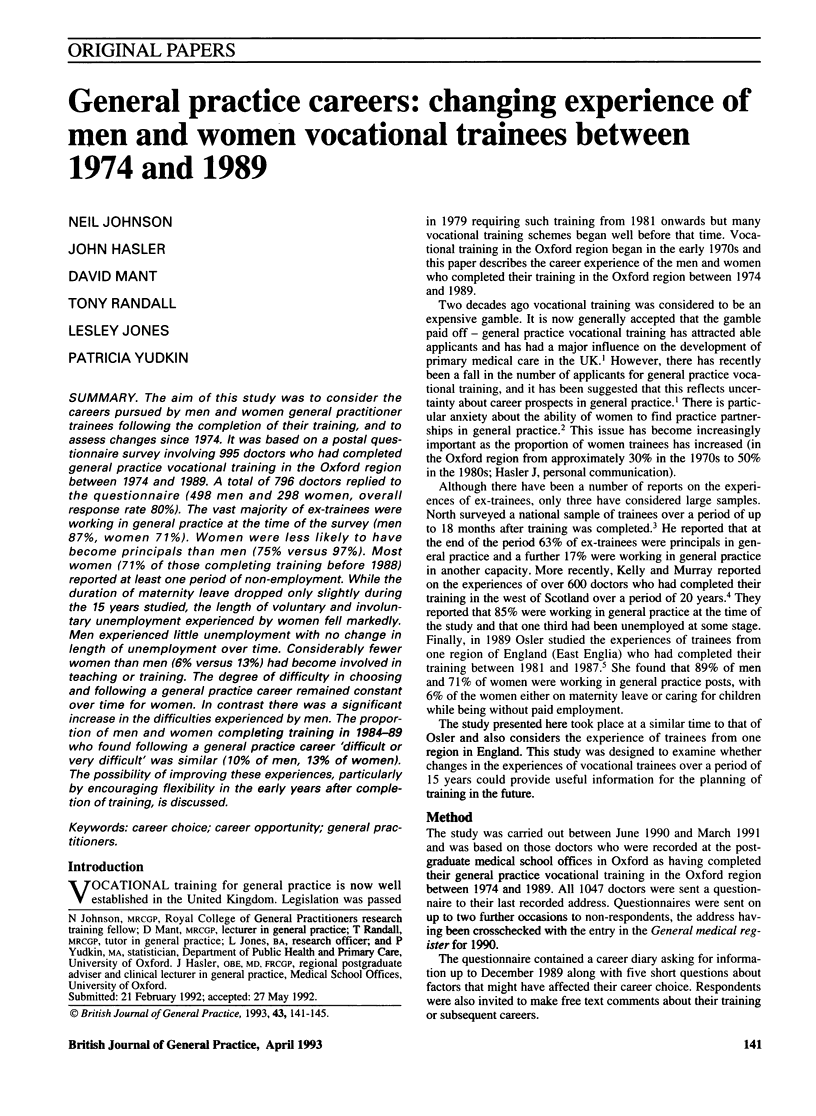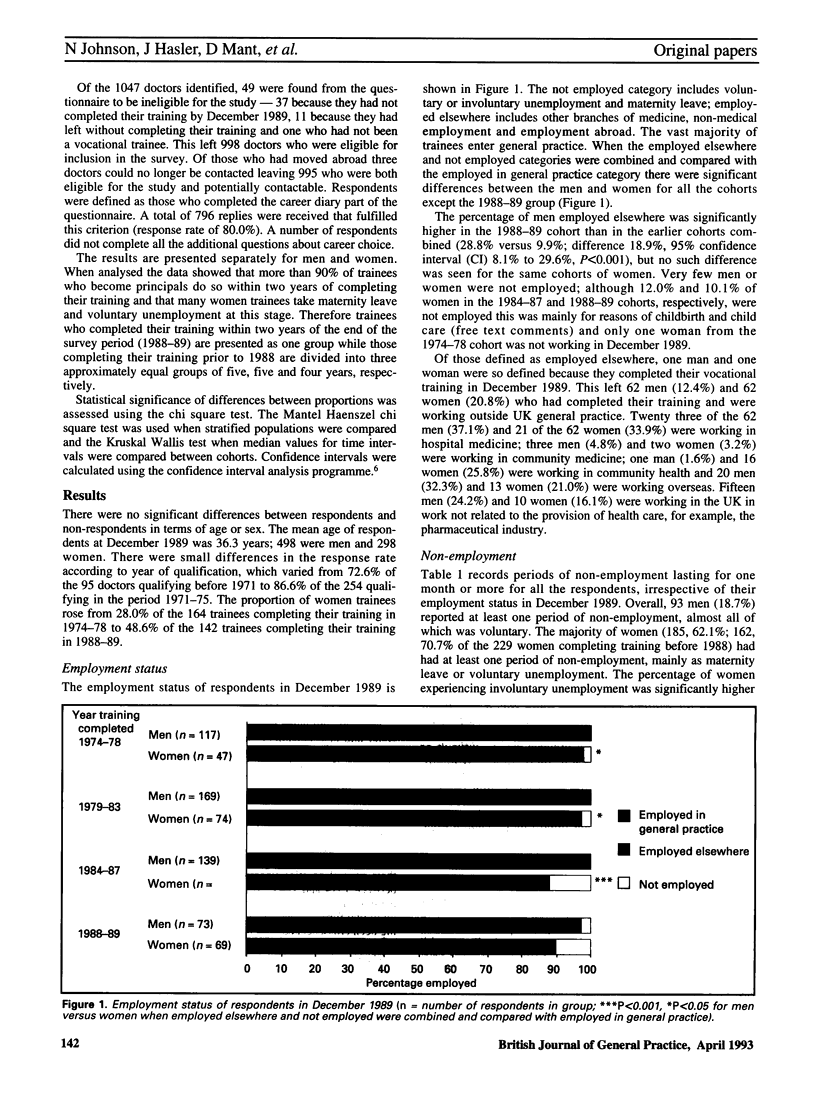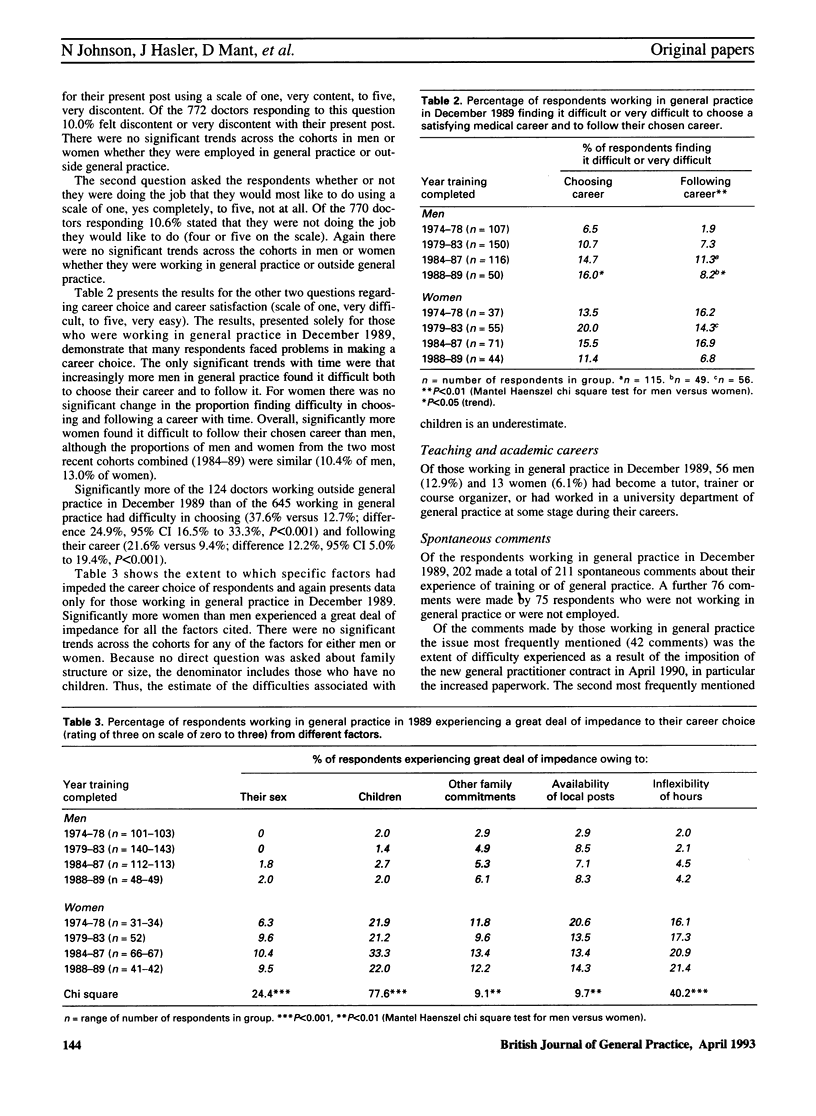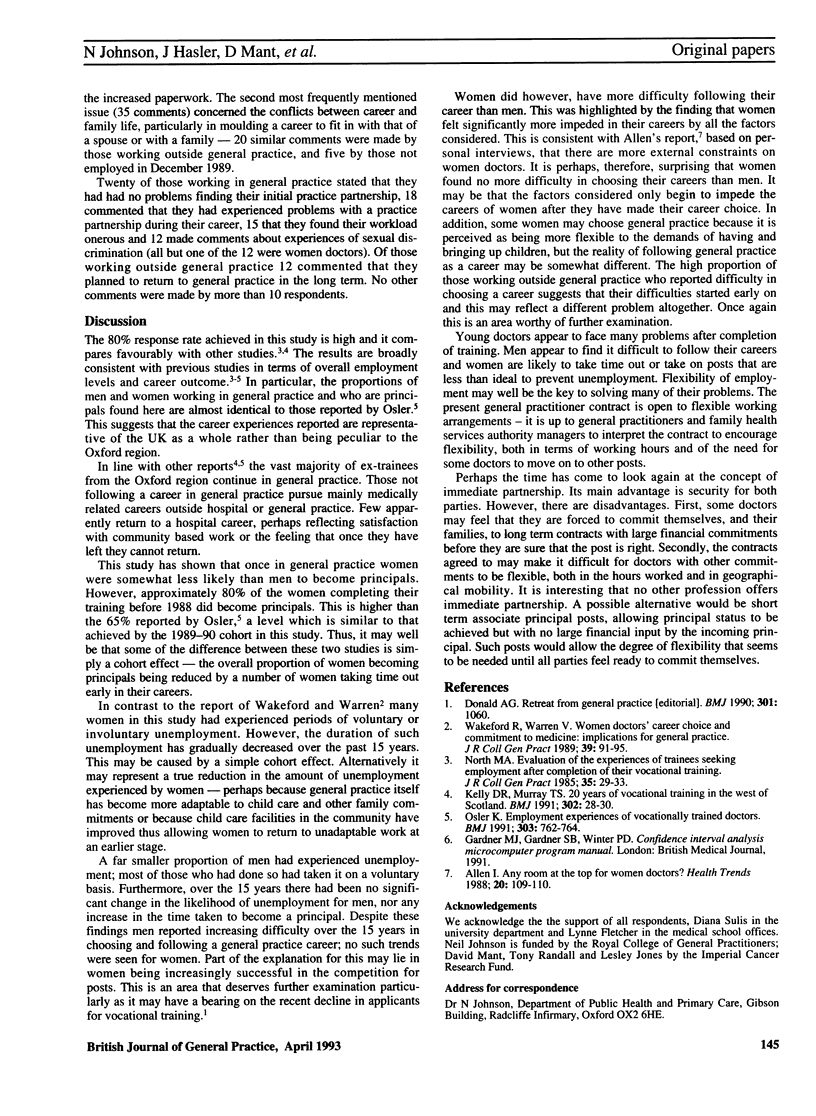Abstract
The aim of this study was to consider the careers pursued by men and women general practitioner trainees following the completion of their training, and to assess changes since 1974. It was based on a postal questionnaire survey involving 995 doctors who had completed general practice vocational training in the Oxford region between 1974 and 1989. A total of 796 doctors replied to the questionnaire (498 men and 298 women, overall response rate 80%). The vast majority of ex-trainees were working in general practice at the time of the survey (men 87%, women 71%). Women were less likely to have become principals than men (75% versus 97%). Most women (71% of those completing training before 1988) reported at least one period of non-employment. While the duration of maternity leave dropped only slightly during the 15 years studied, the length of voluntary and involuntary unemployment experienced by women fell markedly. Men experienced little unemployment with no change in length of unemployment over time. Considerably fewer women than men (6% versus 13%) had become involved in teaching or training. The degree of difficulty in choosing and following a general practice career remained constant over time for women. In contrast there was a significant increase in the difficulties experienced by men. The proportion of men and women completing training in 1984-89 who found following a general practice career 'difficult or very difficult' was similar (10% of men, 13% of women). The possibility of improving these experiences, particularly by encouraging flexibility in the early years after completion of training, is discussed.
Full text
PDF




Selected References
These references are in PubMed. This may not be the complete list of references from this article.
- Allen I. Any room at the top for women doctors? Health Trends. 1988 Nov;20(4):109–110. [PubMed] [Google Scholar]
- Donald A. G. Retreat from general practice. BMJ. 1990 Nov 10;301(6760):1060–1060. doi: 10.1136/bmj.301.6760.1060. [DOI] [PMC free article] [PubMed] [Google Scholar]
- Kelly D. R., Murray T. S. Twenty years of vocational training in the west of Scotland. BMJ. 1991 Jan 5;302(6767):28–30. doi: 10.1136/bmj.302.6767.28. [DOI] [PMC free article] [PubMed] [Google Scholar]
- North M. A. Evaluation of the experiences of trainees seeking employment after completion of their vocational training. J R Coll Gen Pract. 1985 Jan;35(270):29–33. [PMC free article] [PubMed] [Google Scholar]
- Osler K. Employment experiences of vocationally trained doctors. BMJ. 1991 Sep 28;303(6805):762–764. doi: 10.1136/bmj.303.6805.762. [DOI] [PMC free article] [PubMed] [Google Scholar]
- Wakeford R. E., Warren V. J. Women doctors' career choice and commitment to medicine: implications for general practice. J R Coll Gen Pract. 1989 Mar;39(320):91–95. [PMC free article] [PubMed] [Google Scholar]


